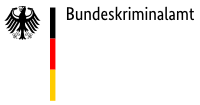
 The open case file at the KTI contains ammunition parts from over 8,000 weapons. Annual additions of some 1,000 objects are roughly compensated by deletions due to statute-barred prosecution and successful identification.
The open case file at the KTI contains ammunition parts from over 8,000 weapons. Annual additions of some 1,000 objects are roughly compensated by deletions due to statute-barred prosecution and successful identification.
Shell casings and projectiles recovered at the scene of crime by scene of crime technicians are forwarded to the Firearms Identification Service of the Forensic Science Institute within the framework of a standard reporting procedure. This is the national facility of the German police for unsolved firearms offences. Ammunition parts from over 8,000 weapons are comprised within the most extensive criminal evidence collection maintained by the Hit-and run .
One of the most important objectives involved in the examination of ammunition recovered at a new crime scene is comparison with ammunition components of the same calibre from all other crime scenes. The results can lead to the identification of links between crimes which are often of considerable importance to investigating agencies.
 The illustration shows the expected hit rate p of the electronic pre-selection as a function of the hit list position n on the basis of known links between crimes (separately for shell casings ( • ) and projectiles ( ° )).
The illustration shows the expected hit rate p of the electronic pre-selection as a function of the hit list position n on the basis of known links between crimes (separately for shell casings ( • ) and projectiles ( ° )).
 As a rule, the surface structures imprinted on the casing in the process make it possible to identify the source of the mark.
As a rule, the surface structures imprinted on the casing in the process make it possible to identify the source of the mark.
 When a pistol is fired, the head of the shell casing is pressed against the breech face of the weapon by gas pressure. As a rule, the surface structures imprinted on the casing in the process make it possible to identify the source of the mark.
When a pistol is fired, the head of the shell casing is pressed against the breech face of the weapon by gas pressure. As a rule, the surface structures imprinted on the casing in the process make it possible to identify the source of the mark.
For purposes of pre-selection during comparative analysis, the Firearms Identification Service uses state-of-the-art image comparison methods. Images of the breech face imprint, firing pin mark, ejector mark on shell casings or land impression marks on projectiles taken with a digital camera are processed as "signatures", compared with all corresponding images in the open case file in an automated process and correlated in a hit list with the most similar candidates. Final comparison is then performed by the expert under a comparison microscope or a comparison scanning electron microscope, as needed.
Automated image comparison methods became available only several years ago and are presently undergoing rapid technological change. Systems which provide for three-dimensional imaging and comparison of projectile surfaces have now been developed to market readiness. Through practical testing and of these systems and the development of corresponding approaches to optimization, the Firearms Identification Service has contributed significantly to progress in this area.
